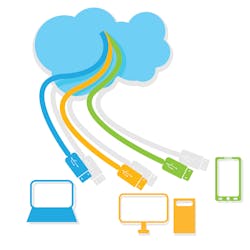By Andy Jensen
I have been told one too many times that the cloud is definitely the future. I first heard that remark five years ago. I heard it again just the other day and it's wrong. The cloud is not the future: It is the present technology standard.
Here's why:
If You Owned a Software Company
Every major software developer is focused on the cloud. They've tapped their best talent to work on their cloud-based applications. If you owned a software company, you'd develop products for the cloud for three key advantages:
First, the software can be delivered to the customer with little cost. Creating and shipping a CD to a customer is expensive. The cloud, on the other hand, puts the application in the hands of the customer immediately.
Second, cloud-based applications can be upgraded and maintained with little cost. New features and bugs can be deployed immediately and your customers will love you for it. The cost savings to you and the benefits to your customers are obvious advantages over traditional client-server software.
Third, providing technical support to your customers becomes ridiculously easy. Because your technicians can log into your customers' accounts, they can immediately see what your customers see. The result: Techs can educate and answer questions faster and more efficiently. You'll require less manpower and your customers will experience better service.
The benefits to the software developer are obvious, and that's why the cloud is the current technology standard. If your dental software vendor has not provided you with a cloud solution, then you need to ask them direct questions and demand direct answers.
The Evidence Is All Around Us
Whenever you open a laptop or swipe open a tablet, you are more than likely cloud computing. According to a survey by Pew Research in 2013, more than 51% of all U.S. adults bank online and 35% are banking on their smartphones. Forrester Research estimates that by 2016 Americans will spend $327 billion with online retailers -- more than the GDP of Norway. And when it comes to socializing, 73% of all online adults use social networking sites, says a 2013 study by Pew Research.
If we are comfortable managing our personal wealth online, spending our dollars online, and sharing the happenings of our personal lives online, we're obviously comfortable with the degree of security and privacy the cloud provides. Yes, sensitive information is compromised at times. But has any of that news changed your online habits? Probably not.
Would any of us want to do business with a bank that provides a CD and asks you to install software so you can bank online? Would you be excited to shop with a retailer who requires you to install a catalog before you can order? Would Mark Zuckerberg have been the focus of a major motion picture if "The Facebook" came on a CD?
The answer to each question is a resounding "No!" We're a cloud-based society. We use the cloud because it's more convenient, easy to use, accessible from anywhere, and conducive to our vast array of lifestyles and preferences.
Why the Past is Still the Present
The dental profession remains chained to a server due to Fear, Uncertainty, and Doubt (or FUD). FUD is an emotional response to the cloud. FUD is also contagious, spread from one practice to another by those who move from one practice to another. FUD forces doctors to pay more for their current technology than it would to modernize. As President Bill Clinton said, "The price of doing the same old thing is far higher than the price of change."
The cure for FUD is education. In my experience, most doctors accept the cloud as a viable way to manage their practices once they've had a chance to voice their concerns and ask their questions. Thousands of doctors and their teams are using the cloud every day to manage their practices. Managing a killer practice can be done just as thoroughly on the cloud as it can be done locally.
If you have doubts about the cloud, then educate yourself. A number of smaller, dynamic companies offer dental software for the cloud, Curve Dental being one of them. Chat with them. Chat with doctors who are already on the cloud. Chat with key opinion leaders. Cure the FUD in your practice today -- you'll be impressed.
____________________
More by Andy Jensen:
- You can't do this at the office
- How to survive the coming zombie apocalypse with Web-based dental software
- Murphy's Law says disaster will strike your office
____________________








